Content from the Brookings Doha Center is now archived. In September 2021, after 14 years of impactful partnership, Brookings and the Brookings Doha Center announced that they were ending their affiliation. The Brookings Doha Center is now the Middle East Council on Global Affairs, a separate public policy institution based in Qatar.
From the diplomatic shakeups in the Gulf to the defeat of the Islamic State (ISIS) in Iraq, the geopolitical landscape of the Middle East and North Africa (MENA) witnessed dramatic shifts in 2017. As the year comes to a close, Brookings scholars have come together to share their expectations for what the year 2018 has in store. Below are their brief outlooks.
Noha Aboueldahab | The counter-revolutionary assault on Tunisia’s search for truth
In 2018, Tunisia’s Truth and Dignity Commission (TDC) is expected to conclude. Since its establishment in 2014, the TDC made significant accomplishments and faced serious setbacks. It received more than 65,000 complaints detailing the horrific human rights abuses suffered by victims over the course of nearly 60 years. The TDC served as a public platform where victims recounted the horrors of torture and other human rights abuses. Some perpetrators owned up to their involvement in these atrocities. These powerful testimonies were televised by the state broadcaster and triggered a national debate about how to address the painful past.
However, the TDC has faced an increasing number of challenges, primarily from attempts by governing elites to clamp down on any meaningful reckoning with Tunisia’s past. Few perpetrators have come forward to testify. Those who did either expressed little remorse or shifted the blame to nameless superiors who orchestrated the repressive practices. Moreover, the prosecution of such perpetrators has not taken place.
Instead, President Beji Caid Essebsi and his government have vehemently opposed the premise of the TDC by passing a law that effectively grants immunity from prosecution for those who committed corruption and economic crimes. Tunisia, then, has not been exempt from the counter-revolutionary assault that has swept the rest of the region.
There is no question that, despite these challenges, the TDC has served as a milestone in Tunisia’s transitional justice process. However, given the significant challenges it continues to face, it is uncertain how the TDC will conclude its mission in 2018. Even if the government succeeds in its attempt to bury the TDC and the possibility of prosecutions, the gruesome testimonies heard thus far have left a mark on Tunisia’s history that will be difficult to erase.
Tarik Yousef | Libya’s outlook will remain highly uncertain
Libya’s post-Qaddafi political transition has been marred by a prolonged period of political fragmentation, violent conflict, and economic dislocation. Ordinary citizens have endured the consequences of heightened insecurity and worsening standards of living. The 2015 Skhirat UN-backed political agreement, which aimed to unify the country and stabilize its economy, has fallen short of expectations as progress with its implementation has stalled. In view of the potential relapse into uncertainty and conflict, the new U.N. envoy for Libya, Ghassan Salame, is working to breathe new life into the political agreement through an ambitious action plan that could improve the increasingly negative outlook in the country.
But unlike the period in the run-up to the Skhirat Agreement, his current efforts will be constrained by the new international political environment affecting Libya. Salame can no longer count on the dedicated backing of the international community—the United States, United Kingdom (U.K.), and Europe—which had invested heavily in the process and largely acted and spoke with one voice between 2014 and 2016.
At present, the prospects for renewed US commitment under the Trump administration are dim, the U.K. is increasingly distracted by Brexit, and other leading European countries are either engaged in competition for influence or narrowly focused on stemming illegal immigration from Libya. Meanwhile, Libya’s Arab neighbors, which stood largely on the sidelines after 2015 when they did not intervene to undermine the political agreement, do not appear any more committed to the U.N. framework.
With the public more polarized and insecure, domestic political and military spoilers will be more emboldened and less constrained in their actions. A political consensus will be hard to reach and the implementation of any new political agreement will suffer setbacks. Under these circumstances, the outlook for Libya in 2018 will remain highly uncertain.
Luiz Pinto | Crude promises: Can Saudi Arabia walk the talk for economic reforms?
Saudi Arabia is a rich state. The broad Saudi public sector is estimated to hold US$ 705.9 billion in net financial assets or 104 percent of GDP. However, Saudi Arabia is on the brink of a very historical moment in which the leadership will have to cope with powerful demographic pressures, radical economic reforms, and the redesign of its power structure amid several proxy wars and intense regional conflicts with Iran. When measured against these challenges, the financial wealth of the government becomes much less reassuring, especially while the country has been running fiscal and current account deficits of US$ 213.2 billion and US$ 76.7 billion as of January 2015. During the last 34 months, Saudi Arabia has lost US$ 241.1 billion in official foreign exchange reserves and US$ 84.9 billion in net financial assets.
The House of Saud is very large and lacks the internal cohesion found in some other Gulf states. This means that King Salman and his young heir have limited control over the Saudi princes and business establishment, which increases the costs of state action and creates more room for adverse political events. In fact, the need to act fast and perform deep reforms with less political and economic costs partially explains the corruption clampdown and political purge that started in November 4, 2017, when dozens of senior princes and hundreds of business tycoons and public officials were arrested.
The Saudi political shakedown has so far produced mixed signals for markets (more willingness for reform but less predictability and less veto players to balance absolute power). On the one hand, the possibility of a financial shock cannot be discounted in the event of future disruptions. On the other, Saudi Arabia is accelerating its structural economic transformation. The year 2018 will be key in determining whether international investors should have been pessimistic or optimistic about Saudi Arabia, and whether the Saudi leadership can walk the talk in terms of much-needed economic reforms.
Nader Kabbani | Syria at a crossroads: Decisions taken in 2018 will determine the future of the country and the region
The Syrian conflict has taken a devastating toll on the country’s society, economy, and political landscape. Around 500,000 people have been killed and over half the population has emigrated or been internally displaced. Now, after nearly six years, the conflict has tilted in the regime’s favor. The regime has reestablished control over much of the country. It has begun reconstruction efforts and is encouraging businesses to reopen. However, as the country enters a new phase of stabilization and reconstruction, there is much at stake.
Internally, the regime faces significant resistance from its base. At the start, it devolved much authority for managing the conflict to local authorities, which benefited greatly from the war economy. The regime is now trying to reestablish control at the center; while local authorities are trying to retain the privileges and autonomy they were granted. The extent to which the regime is able to reassert central authority will determine the degree to which it can stabilize the country and attract investment and funding for reconstruction efforts.
For their part, western governments and institutions are loath to reestablish diplomatic and economic ties with the Syrian regime. Indeed, many analysts argue against supporting Syria’s reconstruction efforts. However, not engaging comes at a cost. It would limit the west’s role in helping to rebuild Syrian institutions weakened by the conflict and it would handicap its ability to influence the regime’s choices, such as the conditions under which millions of refugees in neighboring Lebanon and Jordan might return. Thus, not engaging has serious consequences for the long-term stability of the country and its neighbors.
Decisions taken in 2018 by the regime and its allies as well as by opposition groups and western institutions will collectively determine the trajectory of Syria’s post-conflict development. Decisions made at the beginning of the crisis, in 2011, plunged the country into a devastating six-year conflict. Decisions made in 2018 will be no less consequential.
Adel Abdel Ghafar | 2018: Economic recovery and the renewal of the authoritarian bargain in Egypt?
Egypt has seen a period of sluggish annual GDP growth that has averaged 2% since 2011 primarily due to political instability. But there is some cause for cautious optimism in 2018. The floatation of the Egyptian pound lifted a major constraint on foreign currency liquidity while reining in the currency black market. Fiscal reforms have helped bring public finances under control. Finally, the accelerated development of Egypt’s gas reserves will potentially improve the country’s trade deficit, ensuring domestic supply of energy for the next 10 years, while paving the way for the emergence of a lucrative export market in the future. The giant Zohr field, for instance, has already started production.
However, this recovery is not without its challenges. While floating the Egyptian pound did return some foreign investment and make exports more competitive, the currency also lost more than half its value. This has sharply increased the cost of living as the prices of fuel, food, and public utilities have reached unprecedented levels, putting pressure not only on the poorest segments of society, but also on the Egyptian middle class, which has been feeling the squeeze of President Abdel Fattah al-Sisi’s economic reforms. In fact, the president’s popularity has dipped since 2014 in light of mounting economic and security challenges.
Al-Sisi is nevertheless still expected to win the 2018 presidential elections. Should the potential recovery alleviate pressures off the population through spurring job creation and inclusive growth, the appetite for political change in Egypt will likely take a back seat as al-Sisi renews his authoritarian bargain with the people. However, should the recovery not improve people’s lives, then the combination of rising costs of living, increased repression, and a worsening security situation will heighten public discontent against al-Sisi and make his second term much more challenging than his first.
Mia Swart | Will we see a third intifada in 2018?
If any one issue could trigger an intifada, it would be the status of Jerusalem. On December 6, US President Donald Trump recognized Jerusalem as the capital of Israel and announced that the US embassy would be moved from Tel Aviv to Jerusalem. The decision triggered an immediate outbreak of protests in Palestine and the wider MENA.
But so far, the widespread volatility has not graduated to the point of a third Palestinian intifada. The current protests in Palestine are highly unlikely to escalate into the kind of sustained and intense protests seen in 1987 and 2000, each lasting three to five years. The reasons for this seem fairly clear: fear of the intense loss of life experienced in the previous uprisings, the popular sense that “nothing ever changes,” the lack of military mobilization, and (crucially) the absence of sufficient political will and mobilization on the part of the Palestinian Authority (PA).
The PA lacks the commitment to the Palestinian ideals that marked the leadership of Yasser Arafat. With Abbas in place, it seems the Palestinian response will lack the fire of the past. In 2018, the behavior and attitude of the PA will likely continue to be unprincipled and lukewarm on issues that go to the heart of Palestinian statehood. The stakes are high: the implementation of the delicate 12 October reconciliation deal brokered in Cairo could stand or fall on the Jerusalem question. Whereas the past ten years have given us reason to be skeptical about reconciliation agreements between Fatah and Hamas, the Trump announcement might just strengthen reconciliation between the two groups.
Ali Fathollah-Nejad | The survival of the nuclear deal and Iran’s external and internal challenges
2018 will probably be the most crucial year so far regarding the survival of the Iran nuclear deal. By mid-January, U.S. President Trump may again decertify the JCPOA, yet this time around coupling it with the end of sanctions relief. Despite the EU’s willingness to save the deal, this might pose too high a hurdle. Hence, the Iran deal would risk its very survival.
In order to save it – for it has satisfied nuclear proliferation concerns in a volatile region -, there will be no other realistic pathway other than doing so by embedding it in a wider and more comprehensive Iran policy that goes beyond the nuclear issue. Towards that end, the U.S. and the EU must put an end to their respective tendencies of either demonizing or glorifying Iran, and devise a common Iran strategy. In order to make this happen, Europe must use its economic and political standing it has towards Iran as leverage.
In regional geopolitics, it shall be seen how Tehran will be able to manage its regional overstretch in so many theatres. Crucially, the battle over post-ISIS territory will be a highly sensitive one, as direct military confrontation between forces supported by Tehran on one side and Washington on the other might be looming, especially in that one-third of Syrian territory that is indispensable for the survival of any Syrian state. In this context, it shall also be seen whether Iranian-Russian disagreements over the future of Syria will meaningfully come to the surface.
Domestically, the ongoing dire socio-economic situation of the bulk of the Iranian population that has not seen the post-deal economic revitalization trickling down to it and ongoing political repression will be important parameters to watch. President Rouhani’s proposed budget plan for the upcoming Iranian year (starting March 21) does not look promising to address either of those dimensions. Hence, the recent wave of student and labor protests may only be a forerunner of more to come.
Ranj Alaaldin | The resurgence of the Arab state?
The year 2018 will showcase the resurgence of the Arab state. Since 2011, the decline of the Arab state shifted the balance of power away from the political and military elites and in favor of armed non-state actors that have emerged to become predominant wielders of authority. This peaked in 2014 when ISIS declared the end of the nation-state system that was established a century ago from the ruins of the Ottoman Empire; the rag-tag force rendered meaningless the once sacrosanct borders of Syria and Iraq. During the same period, Shiite militias in Iraq organized into the Hashd al-Shaabi or Popular Mobilization Force (PMF). The PMF’s 100,000 strong fighters filled the vacuum left by the collapse of the US-trained Iraqi army after ISIS seized Mosul in June 2014.
The Arab state will reassert itself in 2018 in large part because the international system has no appetite to confer sovereignty upon state aspirants (such as the Kurds) or modify the dynamics of internal sovereignty, as the anti-Assad opposition groups have found. The way forward is limited within the framework of the existing states. Outside powers lack the energy, creativity, and capacity to alter the domestic balance of power in countries where their options are either constrained (Libya and Yemen) or where interventions have yielded limited, costly results (Iraq and Syria).
The future may be just as bleak. It is unclear what form of state will emerge in the bloodied countries of the Arab world, particularly as Saudi Arabia and Iran intensify their battle to dominate the regional order that is emerging from the ruins of conflict. While it was once the exception, it is now the norm for states to outsource security to unaccountable proxies that are less constrained by the laws and norms of the international system. The contestation over the state is unfolding in radically transformed military theatres.
Beverley Milton-Edwards | The Middle East and North Africa in 2018: The certainty of conflict
Benjamin Franklin said there are only two things certain in life: death and taxes. We might add a third certainty: conflicts in MENA. The region has been suffering from its most violent period in recent memory. The continuance of old conflicts and the rise of new ones have left regional power-balances in a dangerous state as rivalries between countries like Iran and the Gulf states continue to transform the region.
The year 2018 is likely to be characterized by further conflicts and proxy wars, particularly in fragile terrains such as Yemen. The conflict in Yemen is already a man-made humanitarian crisis that has forced millions of Yemenis into famine under a blockade on foreign aid imposed by the Saudi-led coalition. Meanwhile, conflicts in other parts of the region have disrupted millions of other lives, forcibly displacing them from their homes and occupations and turning them into a burdensome challenge to refugee-hosting states like Lebanon and Jordan. It is unlikely that this situation will be reversed in 2018.
As conflict endures, so too will violent armed groups that will continue to exploit and disrupt society, leaving the region in uncertainty. Few in the region have hope that peaceful conflict resolution efforts, like diplomacy and negotiation, will prevail. Instead, the region is faced with the certainty that the everyday existence of millions of lives will continue to be vulnerable in 2018.
Kadira Pethiyagoda | New opportunities for rising Chinese influence in 2018?
President Xi Jinping’s leadership has been marked by its ambitions to convert China’s economic weight into global greatness. Thus, in recent years, China has been increasing its economic and strategic relations with MENA countries, in both relative and absolute terms. In 2018, this trend will continue as Beijing will seek, albeit cautiously, a greater role in diplomatic and political leadership in the region.
This is partly due to the transforming role of the United States in MENA. During the post-Cold War unipolar moment, the United States tried to project itself as a simultaneously omnipotent and beneficent power. Regardless of how well this image resonated with the populations in the region, it maintained some semblance of balance.
However, Trump’s decision to recognize Jerusalem as Israel’s capital has signaled a clear departure from this strategy. The decision was met with near universal criticism, creating a leadership vacuum that has invited new powerful actors in MENA that are perceived to be more neutral, such as China. Not surprisingly, Beijing seized the opportunity and called for the establishment of a Palestinian state with 1967 borders and East Jerusalem as its capital.
Other developments in 2017 have also boosted China’s confidence in its ability to challenge western leadership. For instance, the failure of western-backed rebels to oust the Russian-backed Syrian government of Bashar Assad has shaken western influence in the region. A split within the Gulf Cooperation Council (GCC) may also spur MENA states to re-evaluate their strategic relationships, providing greater opportunities for Beijing to build ties with Qatar, Oman, and others. All this occurs against the backdrop of China’s Belt and Road Initiative under which Beijing is constructing a network of dual-purpose projects that passes through MENA.
The Brookings Institution is committed to quality, independence, and impact.
We are supported by a diverse array of funders. In line with our values and policies, each Brookings publication represents the sole views of its author(s).
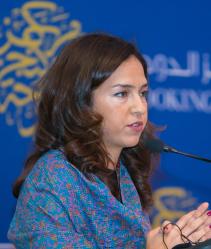



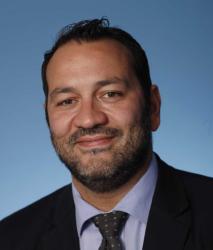




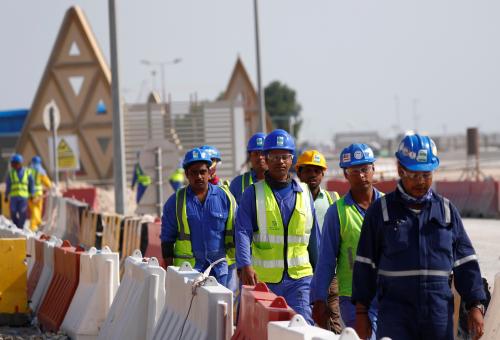
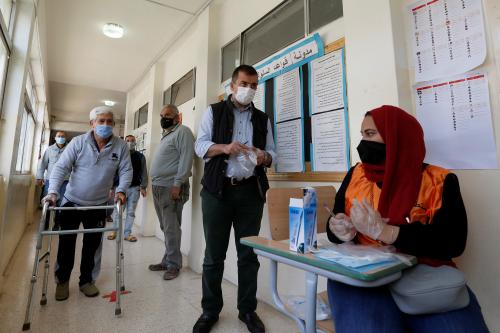
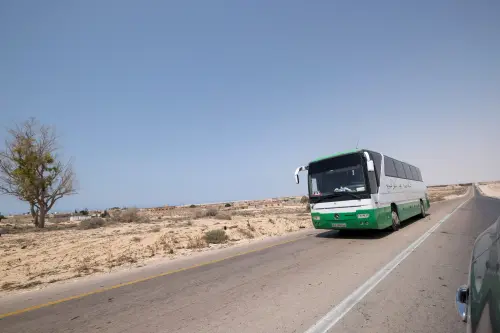
Commentary
Op-edThe Middle East and North Africa in 2018: Challenges, threats, and opportunities
December 21, 2017